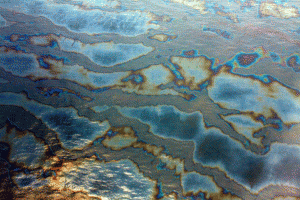 Oil giant BP continues to be tormented by the legacy of the Deepwater Horizon disaster.
Oil giant BP continues to be tormented by the legacy of the Deepwater Horizon disaster.
It may now be three years since the BP finally managed to stop the oil flowing, but its bank account continues to bleed money in payouts and new evidence suggests the Macondo rig itself is still leaking oil.
BP has become so fed up with the legal process and the continuing multi-million dollar pay-outs (the spill fund is shelving out $77 million a week) that the oil company has asked a federal judge to temporarily halt all spill payments, whilst a former FBI Director investigates supposed misconduct by a settlement lawyer.
The oil giant alleges that hundreds of millions of dollars of payments could be “tainted by fraud, corruption and malfeasance.”
“A temporary suspension in … payments will eliminate the serious risk of any further irreparable harm to BP while having little negative impact upon the claimants,” lawyers for BP wrote in court documents.
BP has also started a newspaper advertising campaign to argue that it is being defrauded out of millions of dollars by businesses and their greedy lawyers. It has also set up a fraud hotline and is asking Gulf residents to snitch on their neighbours.
Another problem for the company is out at the wreck site. A new scientific study has revealed that the Macondo rig is continuing to leak oil, leading to oily sheens on the surface. A new chemical analysis reveals that the oil is coming from pockets of trapped oil in the wreckage of the rig.
It was back in September last year that oily sheens were reported to the US Coast Guard, raising fears that the doomed rig might still be slowly leaking.
Up until now though researchers thought the sheens might be naturally occurring oil. But not any longer. Researchers used a new analysis to finger-print the oil and found that it was coming from BP’s sunken rig.
When the rig sunk, its tanks still contained hundreds of barrels of a mixture of drilling mud and oil. Scientists now believe that this oil is seeping to the surface as the tanks slowly corrode.
The bad news for BP is that the rig is still seeping. The good news is that it is not the plugged well-head that is leaking.
“This appears to be a slow leak from the wreckage of the rig, not another catastrophic discharge from a deep oil reservoir,” says David Valentine, a Professor of Microbiological Chemistry at the University of California, Santa Barbara.
But even a slow leak means that this disaster continues to cause problems, three years on.
